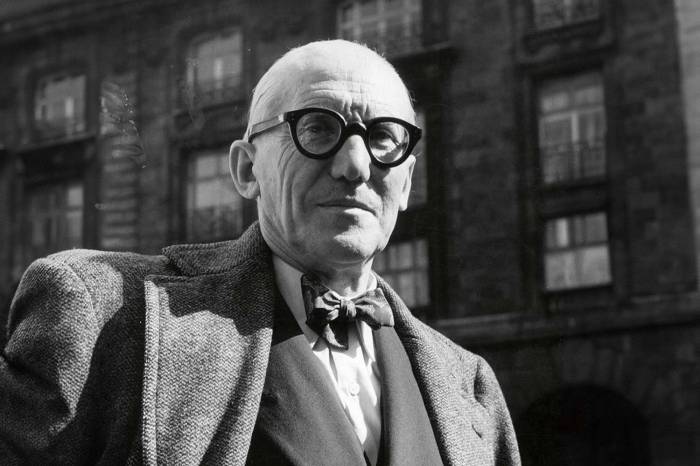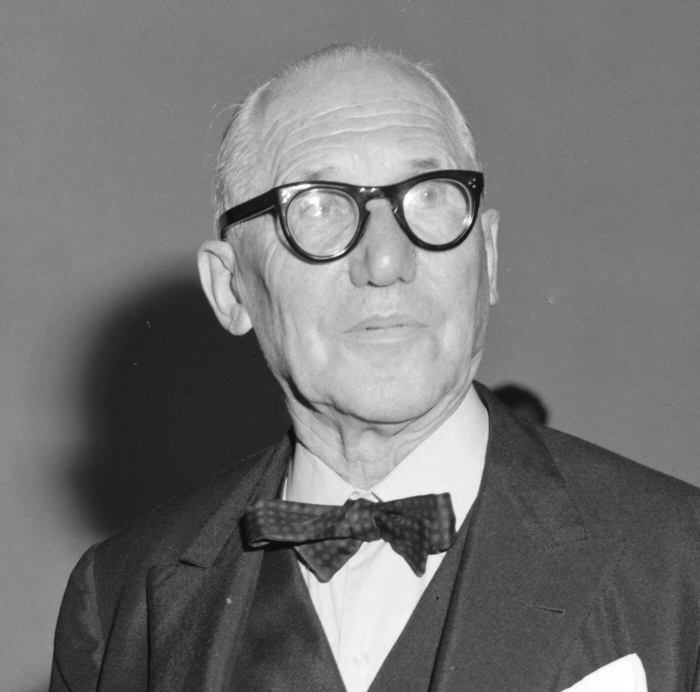Exploring the Legacy of Le Corbusier: A Modern Architectural Icon
Le Corbusier, a visionary architect of the 20th century, revolutionized the world of architecture with his innovative designs and bold principles. From his early life to his lasting influence on contemporary architecture, this narrative delves into the captivating journey of Le Corbusier, shedding light on the man behind the iconic structures that define modernity.
Le Corbusier’s Early Life

Le Corbusier, born as Charles-Édouard Jeanneret-Gris on October 6, 1887, in La Chaux-de-Fonds, Switzerland, had a background deeply rooted in the world of watchmaking. Growing up in a family of artisans and artists, he was exposed to craftsmanship and creativity from a young age.
This early exposure to the intricacies of design and precision greatly influenced his later architectural endeavors.
Influences of His Upbringing
Le Corbusier's upbringing in the bustling artistic environment of La Chaux-de-Fonds instilled in him a sense of appreciation for the harmony between form and function. The city's rich architectural heritage, known for its Art Nouveau style, inspired him to explore the relationship between buildings and their surroundings.
This early exposure to innovative design concepts laid the foundation for his future groundbreaking architectural principles.
Significant Events and People
One pivotal figure in Le Corbusier's career was his mentor, Charles L'Eplattenier, a Swiss architect and artist who recognized his protégé's talent and encouraged him to pursue architecture. Under L'Eplattenier's guidance, Le Corbusier honed his skills and developed a keen eye for detail and proportion.Additionally, a transformative experience during his travels to Paris in 1907 exposed him to the architectural wonders of the city.
The encounter with the bustling metropolis and its diverse structures sparked his interest in urban planning and modern architecture, setting the stage for his future innovative designs.
Le Corbusier’s Architectural Style

Le Corbusier's architectural style is characterized by the use of geometric shapes, open floor plans, and the incorporation of modern materials such as concrete and steel. He believed in the concept of "form follows function," emphasizing the importance of functionality in design.
Le Corbusier also focused on creating buildings that were in harmony with their surroundings and that promoted a sense of well-being for the occupants.
Key Characteristics of Le Corbusier’s Architectural Style
- Use of geometric shapes and clean lines
- Open floor plans and flexible living spaces
- Integration of modern materials like concrete and steel
- Emphasis on functionality and efficiency
- Harmonious relationship with nature and surroundings
Examples of Famous Buildings Designed by Le Corbusier
- Villa Savoye in Poissy, France
- Unité d'Habitation in Marseille, France
- Chandigarh Capitol Complex in Chandigarh, India
- Capitolio Nacional in Chandigarh, India
Contribution to Modern Architecture
Le Corbusier's architectural style had a significant impact on modern architecture by introducing new ideas and principles that revolutionized the field. His emphasis on functionality, efficiency, and the use of modern materials paved the way for the development of the International Style.
His designs continue to inspire architects around the world and his legacy remains influential in the architectural community.
Le Corbusier’s Design Principles
Le Corbusier, a pioneer of modern architecture, had a distinct design philosophy that focused on functionality and aesthetics. His approach to architecture was guided by the belief that buildings should serve the needs of the people living or working in them, while also being visually appealing.
Integration of Form and Function
Le Corbusier believed that a building's design should be a reflection of its purpose. He emphasized the importance of functionality, advocating for efficient use of space and natural light. His designs often featured open floor plans, large windows, and minimal ornamentation to create a sense of harmony between form and function.
Use of Pilotis and Roof Gardens
One of Le Corbusier's signature design elements was the use of pilotis, or reinforced concrete stilts, to elevate buildings off the ground. This allowed for more open space at ground level, promoting better ventilation and natural light. He also incorporated roof gardens into his designs, blurring the lines between indoor and outdoor spaces and creating green oases in urban environments.
Urban Planning in Architecture
Le Corbusier was a strong advocate for urban planning and believed that architecture should play a role in shaping cities. He developed the concept of the Radiant City, which proposed a new urban form based on high-rise buildings surrounded by green space.
His designs aimed to create efficient, livable cities that prioritized the well-being of their inhabitants.
Le Corbusier’s Influence
Le Corbusier's impact on the field of architecture is profound and far-reaching. His innovative ideas, design principles, and architectural style have influenced numerous architects and architectural movements around the world. His legacy continues to shape contemporary architecture and urban planning.
Architects and Movements Influenced by Le Corbusier
- Frank Lloyd Wright: The renowned American architect was influenced by Le Corbusier's modernist approach and principles of functionalism.
- Oscar Niemeyer: The Brazilian architect was inspired by Le Corbusier's use of reinforced concrete and his exploration of sculptural forms in architecture.
- The International Style: Le Corbusier's work played a significant role in the development of the International Style, characterized by minimalism, functionalism, and geometric shapes.
Lasting Impact on Contemporary Architecture
- Urban Planning: Le Corbusier's ideas on urban planning, such as the concept of the Radiant City, have influenced the design of modern cities and the organization of urban spaces.
- Sustainable Design: His focus on functionality and efficiency in design has paved the way for sustainable architecture practices that prioritize environmental considerations.
- Brutalism: Le Corbusier's use of raw concrete and bold geometric forms has had a lasting impact on the Brutalist architectural movement, characterized by its rugged aesthetic.
Le Corbusier’s Controversies
Le Corbusier, despite his significant contributions to modern architecture, was not without controversies and criticisms surrounding his work.
Criticism of Le Corbusier’s Urban Planning
One of the main controversies surrounding Le Corbusier was his approach to urban planning, specifically his advocacy for high-rise buildings and the destruction of historic city centers. Critics argue that his designs often lacked consideration for the human scale and community dynamics, leading to alienation and social issues within his planned environments.
Controversy over Le Corbusier’s Brutalist Architecture
Le Corbusier's use of raw concrete in his designs, a characteristic of Brutalist architecture, has sparked debates over the aesthetic appeal and functionality of such structures. While some praise the honesty and simplicity of Brutalism, others criticize it as harsh and oppressive, especially when poorly maintained over time.
Critique of Le Corbusier’s Vision for Modern Living
Another point of contention is Le Corbusier's vision for modern living, which often prioritized efficiency and functionality over comfort and individuality. Critics argue that his standardized designs and rigid principles limited personal expression and cultural diversity in architecture.
Ending Remarks
In conclusion, Le Corbusier's legacy transcends time, leaving an indelible mark on the architectural landscape. His fusion of functionality and aesthetics continues to inspire architects worldwide, ensuring that his visionary spirit lives on in every structure influenced by his groundbreaking work.
Essential FAQs
Was Le Corbusier self-taught?
Although he did not receive formal education in architecture, Le Corbusier learned through apprenticeships and self-study, honing his skills over time.
What are some famous buildings designed by Le Corbusier?
Some iconic structures include Villa Savoye, Unité d'Habitation, and the Capitol Complex in Chandigarh, showcasing his distinct architectural style.
How did Le Corbusier integrate urban planning into his designs?
Le Corbusier incorporated green spaces, functional zoning, and efficient circulation patterns in his urban designs to prioritize both aesthetics and functionality.




